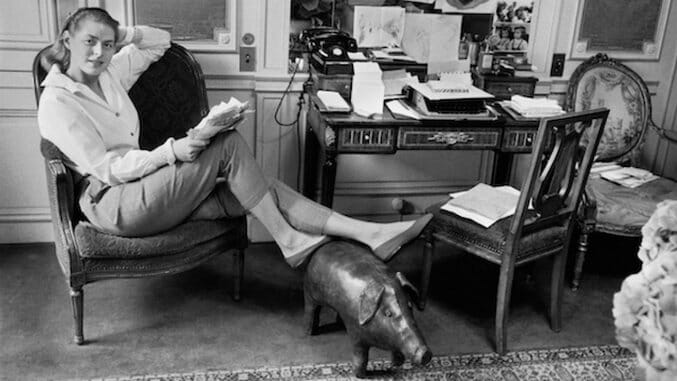Ingrid Bergman: In Her Own Words

About 20 minutes into Stig Björkman’s “film autobiography,” Ingrid Bergman: In Her Own Words, the director features a film clip of Bergman’s 1939 “no-makeup screen test” for David O. Selznik. With a no voiceover and only a minimalist piano score playing in the background, the camera lingers on the actress’ face. She is breathtakingly luminous and ravishing—exactly how most remember the Swedish actress, star of a remarkable number of classic films, including Casablanca (1942), Gaslight (1944), Alfred Hitchcock’s Spellbound (1945) and Notorious (1946), Anastasia (1956) and Ingmar Bergman’s (no relation) Autumn Sonata. Björkman’s film, however, isn’t only skin deep. It examines the life of a free-spirited woman who didn’t adhere to mid-20th century social norms. Bergman comes across as imperfect and flawed—human—which is contrary to the way we view most screen idols.
Swedish writer, critic and filmmaker Björkman had unprecedented access to Bergman’s extensive archive of letters, notes, photos and home movies as well as the full participation of the actress’ four children: Pia Lindström, Ingrid Rossellini, Roberto Rossellini and Isabella Rossellini. In fact, it was Isabella who in 2011 had suggested that Björkman make “a film about Mama.” The family’s involvement in the project is both an advantage and an encumbrance. While viewers have access to Bergman like never before, parts of her biography are simply glossed over or never addressed, giving an incomplete and highly curated view of her life story.
The actress herself was a prolific filmmaker and photographer who extensively documented her own life and that of her family. A surfeit of private footage, coupled with Swedish actress Alicia Vikander (Ex Machina, The Danish Girl) channeling Bergman through first-person narration, quickly establishes a sense of intimacy between subject and audience. Björkman’s inclusion of old newsreels and interviews with the actress at various times of her career provides context to Hollywood history and Bergman’s place in it.
The early life of Bergman, an only child, was marred by tragedy. Her mother died when she was 3, and her father, who owned a photography shop, died when she was 12. She was sent to live with an unmarried aunt, who died shortly thereafter. There were other deaths in the family, and by all accounts Bergman grew up a lonely and shy child. Left only with photos and film footage of her parents, Bergman’s own children reveal through interviews the importance of the camera in the actress’ life. She associated the lens with her beloved father, explaining the almost compulsive need to be both in front of the camera and behind it.
In Her Own Words provides an overview of Bergman’s transition from Swedish film star to Hollywood leading lady. It documents Selznick’s gamble in bringing the star of the 1936 Swedish film Intermezzo across the Atlantic for the American remake of the same picture. Just as revealing are the key friendships that Bergman developed with Selznick’s first wife, Irene, and voice coach Ruth Roberts. She credited the two women for helping her establish a successful career in America: Irene for helping her navigate Hollywood politics and Roberts for improving her English. Björkman all too briefly shows that Bergman was a loyal friend to the women in her life, both in Los Angeles and those she left behind in Sweden.
The same can’t be said of her fidelity to the men she married—and to an extent her own children. To its credit, the documentary doesn’t shy away from Bergman’s tendency to love ’em and leave ’em. Her first marriage to Dr. Petter Lindström, with whom she had daughter Pia, survived trysts with war photographer Robert Capa and director Victor Fleming, but not the much publicized affair with Italian director Roberto Rossellini. Bergman fell from grace and was branded immoral in America after giving birth to their first child out of wedlock. (They were both technically still married when their affair began). Devastated by the scandal, she remained in Italy to work solely on films with Rossellini, including Voyage to Italy, Stromboli, Europa ’51 and Fear.
-

-

-

-

-

-

-

-

-

-

-

-

-

-

-

-

-

-

-

-

-

-

-

-

-

-

-

-

-

-

-

-

-

-

-

-

-

-

-

-








































